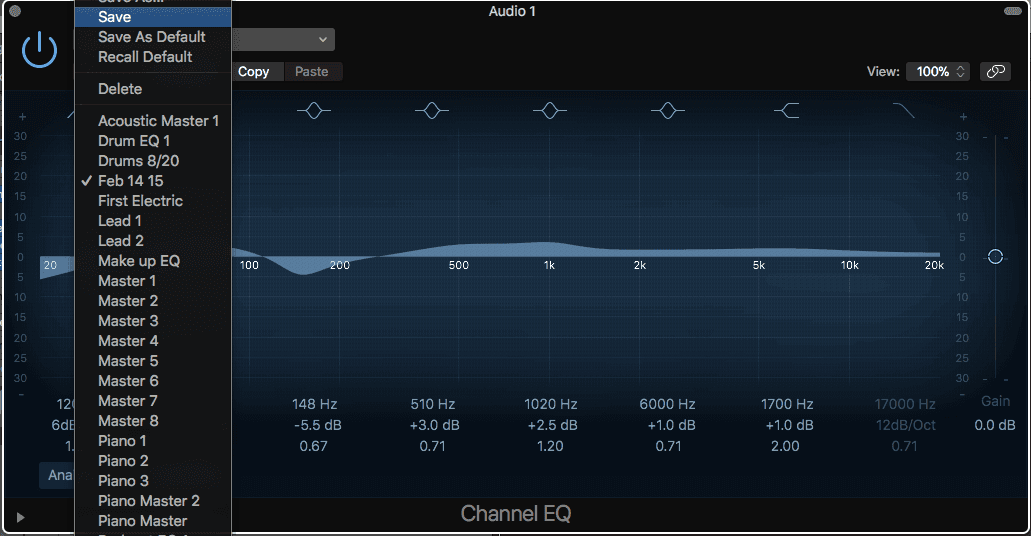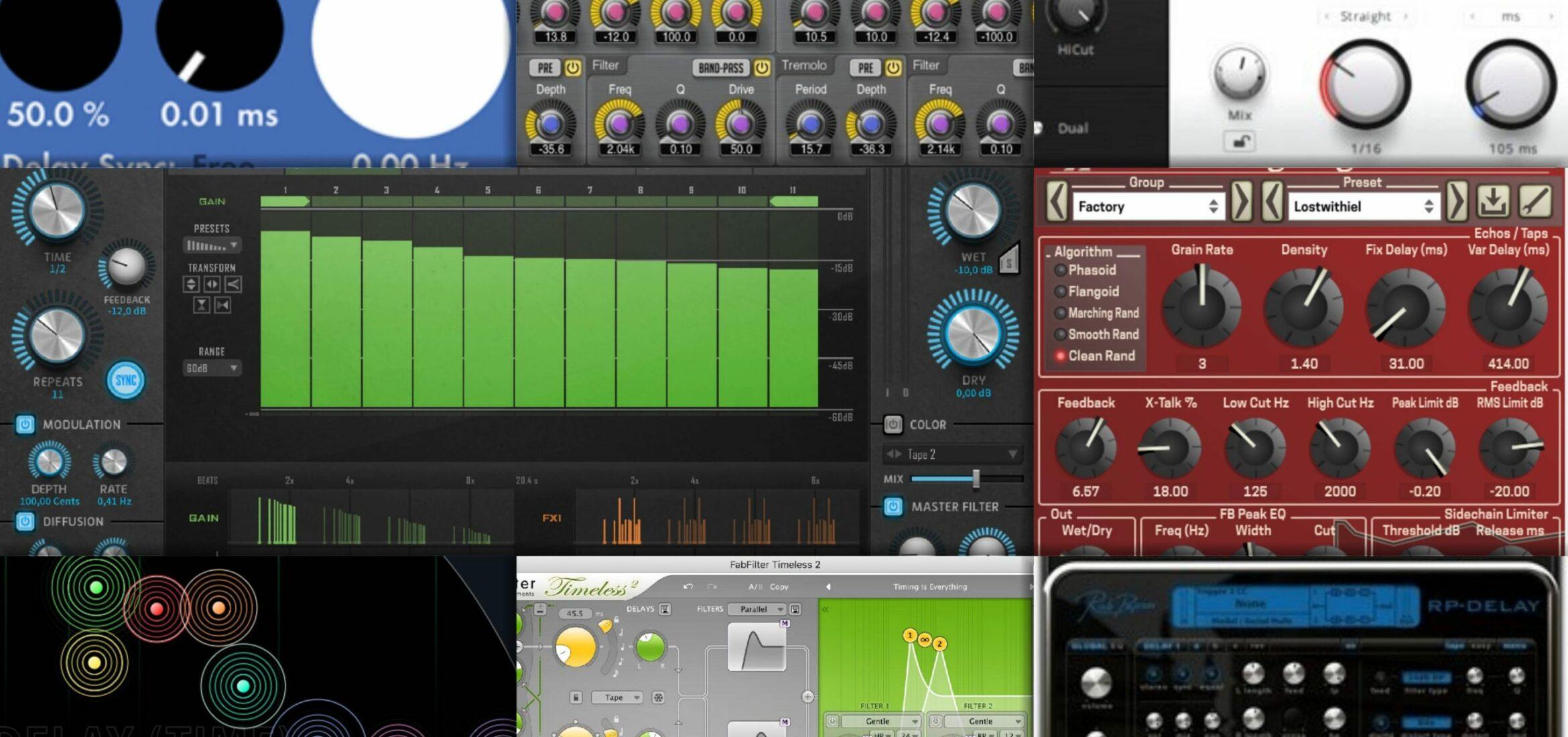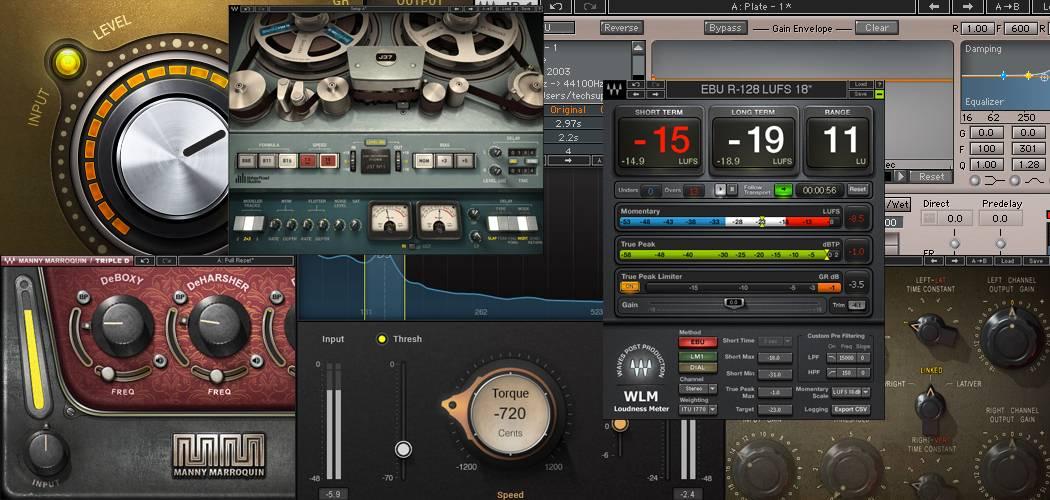No matter what DAW you use, chances are you love to try out new plugins whenever you can. DAWs like Logic Pro X and Pro Tools already come packed with hundreds of plugins out of the box. Sometimes, you might even download a bunch of new plugins without knowing exactly what they do, what their parameters entail, and so on. If this is the case, there are a few ways to familiarize yourself with the software. You can tinker around with one parameter at a time during playback or do some research and watch online tutorials showing off the plugin. But, if possible, perhaps the best way to understand what a given plugin can really do, is to utilize plugin presets.
What Are Plugin Presets?
Simply put, plugin presets serve as models for how the plugin works best in a given scenario. When you open up a plugin in a DAW or otherwise, you can expect to see all the knobs, buttons, and switches in their default setting. This either means everything is turned off, or the settings are already pre-set with certain parameters. Some plugin software designers set their default as a «one size fits all» solution, meaning the settings work in most situations, and can then be optimized manually. In addition to the default mode, many plugins also feature several other presets to hone in on specific desired outcomes. A drum EQ plugin, for instance, might feature presets for a «boomy kick,» or «aggressive snare,» etc. In this case, these presets can help you get started when mixing drums.

One Size Doesn’t Fit All…But it’s a Start
Because every mix differs from one another, not every preset will always work best, or at all. However, these plugin presets can provide you with the basis for finding the optimal settings. The designers of the plugin created these presets with context in mind. So that reverb plugin with the specifically named, «concert hall reverb» preset will most likely produce something like you’d expect.
Once you’ve found the plugin presets that closely match your preferences, you can begin to tinker with the parameters. If you stray too far, you can always jump right back to the preset, giving you a solid foundation for honing in on the sound you want. The benefits don’t stop there, however. By hopping around to different presets and making your own tweaks, you’ll gradually learn how the plugin works, and intuit how to make it work for your mix.
Making Your Own Presets

Sometimes you’ll land on a preset that needs no changing. But, more often than not, you’ll want to make a few adjustments to the plugin presets for your unique track. Let’s say you’re using one of your favorite vocal plugins to add a vocoder effect. The preset will manipulate the parameters for you to get you somewhere close. From there, you can edit things like width, speed, pan, and more. Once you’ve figured all this out, you’ll have essentially created your own preset that you can use down the road.
Make sure you give these settings a fitting name (and perhaps a date) so you can reference your own presets later on. Creating your own presets isn’t only a time saver, it also comes in handy for album production. Better yet, combine a string of plugin presets together in a chain (or «patch» in Logic) and save it so that you can use it whenever you desire. Having an arsenal of consistent plugin presets and patches/chains for a large project with several songs can help keep everything cohesive.
Presets for VST Virtual Instruments and Synths
Plugin presets don’t only come in handy for effects processing. If you want a jumpstart on learning a new virtual instrument or synth plugin, these often come loaded with presets as well. For instance, it can take a while to fully grasp the capabilities of something like the Arturia minimoog V. With three oscillators, several filters, pitch benders, and more, you could come up with trillions of unique sounds with this VST synth alone. But using the plugin presets can help you get started on finding the perfect frequencies. To use the minimoog V example, this VST synth includes over 450 presets. Each of these has been carefully designed by professional sound designers around the world. The «101 Galaxy» preset exudes 70s sci-fi film vibes, while the «Conversation» preset mimics human mouth sounds and tones.
You can find loads of VST plugins and synths online, most of which come packed with presets. These really come in handy for more complex and esoteric virtual instruments that require a lot of knowledge, experience, and/or tweaking to truly utilize. These presets won’t only help you land on better sounds, they’ll also guide you into sculpting sounds of your own, which you can save as presets for future use.
Conclusion
Some aspects of mixing need more of a distinctive approach. But there’s no denying that plugin presets provide a helpful jumping off point for landing on the right effect, level of compression, EQ curve, virtual instrument sound, etc. Not only can presets improve your mix, they can teach you about the plugin, the instrument, and about certain variables in general. So don’t shy away from using these handy tools, let them help you make some killer presets of your own.
Sobre el autor

Ethan Keeley
Escritor, locutor, músico y editor de audioEthan Keeley es músico, locutor y escritor de Rochester, Nueva York. Cuando no está de gira con su grupo Unwill, trabaja en nuevas canciones e historias.
Deja un comentario
Inicia sesión para comentar


